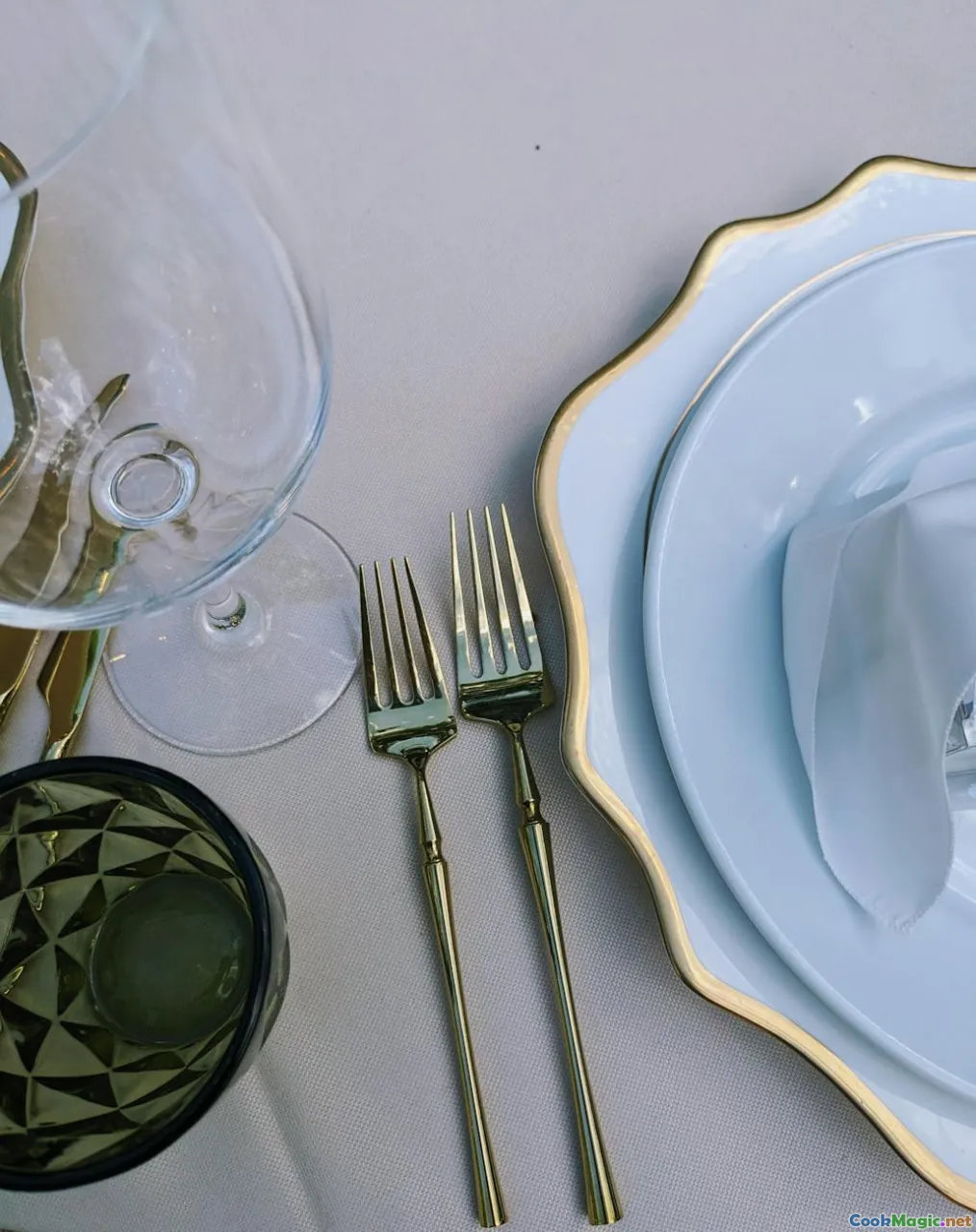Place Setting Protocols in Classic American Dining
8 min read A detailed exploration of the intricate protocols and cultural significance behind place settings in classic American dining, blending tradition with contemporary elegance. May 25, 2025 15:00
Place Setting Protocols in Classic American Dining
Imagine walking into a grand dining room, where the scent of roasted turkey mingles with the subtle aroma of freshly baked bread. The table is set with precision; each utensil, glass, and plate meticulously arranged to create a visual symphony of order and elegance. This scene isn’t just about aesthetics—it's a reflection of centuries of tradition, social customs, and cultural values embedded in American dining etiquette.
Introduction: The Art of the Perfect Table Setting
Dining is more than just sustenance; it’s a ritual that connects us to history, community, and personal identity. In the United States, the art of setting a table has evolved from colonial times to modern elegance, balancing practicality with grace. Whether hosting a formal Thanksgiving feast or an intimate Sunday brunch, understanding the protocols of American place settings elevates the experience from mundane to memorable.
Historical Roots of American Dining Customs
Colonial Beginnings and European Influences
The roots of American dining etiquette trace back to European traditions, primarily British, French, and Spanish customs. Early settlers brought with them the formality of their homeland, which gradually adapted to the new American landscape, emphasizing practicality alongside elegance.
The Evolution Through the 19th and 20th Centuries
As America grew, so did its culinary and social sophistication. The Victorian era introduced elaborate table settings with multiple utensils, while the rise of the middle class in the 20th century simplified these customs, making formal dining more accessible without losing its dignity.
Core Principles of a Classic American Place Setting
The Basic Layout
A typical American place setting is designed to facilitate a seamless dining experience, with utensils arranged from the outside in, corresponding to the order of courses.
- Dinner Plate: Centerpiece of the setting, often accompanied by a charger in formal settings.
- Utensils: Forks to the left, knives and spoons to the right.
- Glassware: Positioned above the knives, with specific glasses for water, wine, and other beverages.
- Napkin: Folded gracefully, placed either to the left of the forks or on the plate.
The Details That Matter
Utensil Placement:- Thesalad fork (if used) is placed to the far left.
- The main course fork is next to the plate.
- The main knifesits to the right of the plate, with thesalad knife further right.
- The dessert spoon or forkis often placed horizontally above the plate or brought out with the dessert.Glassware Arrangement:- Thewater glass is the largest, placed directly above the knife.
- The wine glasses (red and white) are positioned to the right of the water glass, slightly angled.
Formal vs. Casual Settings
Formal American Dining
In formal settings, the table is set with multiple utensils and glasses to accommodate several courses—soup, fish, entrée, dessert. The placement follows strict rules, with each utensil designated for a specific course.
Casual American Dining
Casual settings simplify the arrangement: usually, a single fork, knife, and spoon, with fewer glasses. Still, proper etiquette dictates that utensils are placed correctly and used appropriately.
Cultural Significance and Social Etiquette
Respect Through Precision
A well-set table demonstrates respect for guests and the host. It signals attentiveness to detail and a readiness to enjoy the meal in a refined manner.
Personal and Social Identity
Table manners, including correct place settings, reflect cultural background, education, and social status. Mastery of these protocols fosters confidence and social grace.
Emotional and Sensory Connection
The visual appeal of a meticulously arranged table enhances anticipation, heightening the sensory experience—crisp linen, gleaming silverware, and the inviting aroma of a well-prepared meal.
Personal Insights and Anecdotes
Growing up, my family’s Sunday dinners were a ritual of sorts. My grandmother, with her meticulous eye, would set the table with a perfection that seemed almost ceremonial. I remember the gleam of polished silver, the crispness of our white linen, and the way she explained each utensil’s purpose. Those dinners weren’t just about the food—they were about respect, tradition, and creating a space where family bonds could flourish.
In my professional experience working with upscale restaurants, I've observed that a well-crafted table setting can set the tone for the entire dining experience. Guests feel valued, and the ambiance is elevated, transforming a simple meal into a memorable occasion.
Practical Tips for Mastering Place Settings
- Invest in quality: Good china, silverware, and glassware make a difference.
- Know your courses: Understand which utensils are used for each dish.
- Align everything correctly: Ensure all items are symmetrically placed and evenly spaced.
- Practice consistency: Use the same style of tableware to maintain harmony.
- Stay updated: Modern American dining often blends traditional protocols with contemporary aesthetics.
Conclusion: The Lasting Legacy of American Dining Protocols
Place setting protocols are more than mere rules—they are a living tradition that honors history, nurtures social bonds, and elevates the dining experience. Whether you’re hosting a formal dinner or enjoying a casual family meal, understanding and applying these customs helps you serve not just food but a sense of occasion and respect. So next time you set the table, remember: every fork, knife, and glass tells a story—your story of hospitality, culture, and shared moments.
Embrace the art of the perfect place setting, and transform every meal into a celebration of tradition and personal grace. After all, in the dance of dining, the way we set the stage is just as important as what we serve.









